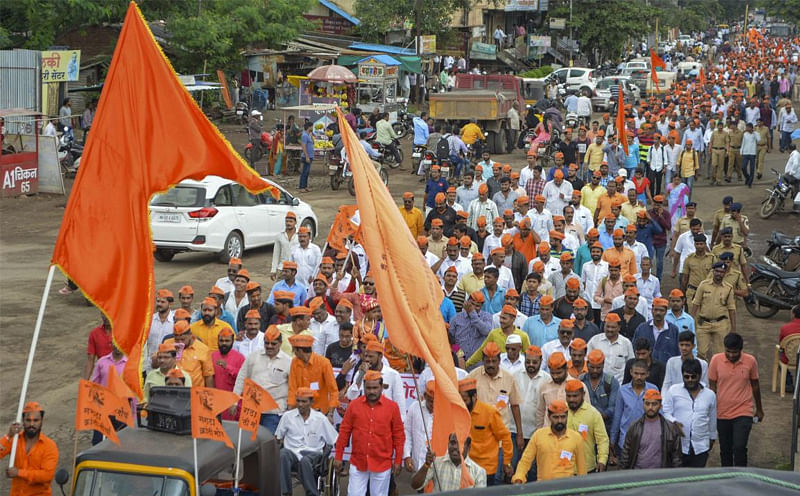Social groups fighting over resources and attempting to prove dominance over each other is the age-old saga of human history. The Maratha movement is one of those fights. By demanding reservation for their community in government jobs and educational institutes, the Marathas are trying to increase their social security and decrease social protection of other communities. This is also an effort to establish supremacy of their group over others.
The Maratha movement is propelled by the memory of their muscle power over several forces in history. Many such agitations, like in Patels, Jats and Muslims demanding reservations have a history of such perceptions.
If one looks at the social psychology of these movements, while the groups demanding reservation are claiming for what they feel is their right, their demands necessitate infringing upon rights of other groups. Thus, such movements, despite being righteous, create social conflict in two ways.
One, they make a relatively permanent demand for resources, and thereby threaten the fulfillment of the demands of other competing groups. This makes their rival groups violent. Two, they provoke other groups to create such reasons and conflict.
In this way, it becomes a vicious cycle of never-ending conflicts that society endures.
Lawmakers fail to see the broader benefit of humanity and their actions are bound to remain community- and vote-centred. The question is, then, is this stoppable? To answer this, we need to understand whether we are born with the perception that members of ‘other’ communities are our competitors, or do we learn to hate ‘others’.
It is interesting to note that the process of learning about ourselves is based on contrasting ourselves with others. Social psychology explains that the process of identity formation comprises learning about our social affiliations, like education, occupation, caste, community etc. The entire process involves knowing about our individual and collective accomplishments and belongingness.
During this process, we learn to categorise ourselves and others based on the group we belong to. People of the same group (categorised on any basis) are part of in-group while people who are not part of the group are out-group. They share some common understanding about in-group and attach a shared emotion to it.
In-group and out-group
Social categorisation leads us to identify with our in-group and our self-esteem depends upon it. Thus, trying to enhance the image of our group becomes an important part of our identity formation.
We not only tend to compare our in-group favourably against other ones, but also maximise the difference between the in-group and out-group. We also minimise the perception of within group difference. We gather and recall more positive information on the in-group and negative information about the out-group.
During this intergroup comparison, we tend to overlook similarities. Thus, in the process of creating ourselves, we create ‘others’. Social identity contestations are the root cause of collective violence in society. Interestingly though, ‘others’ are an essential part of ‘self’. Therefore, extending the boundaries of self to include ‘others’ may ease the tension.
Based on this insight, most social psychological solutions to conflict resolution focus on the process of reducing social competition and enhancing cooperation.
In order to perceive similarities with other groups, we need to go back to the processes which taught us the difference. These processes are learned at schools, at home and from media.
We need to understand that, though it is a human tendency to find and create groups, on any basis, a modern and civilised society should be accepting of differences and diversity in others. To accomplish this, there are two major aspects towards which policies can be directed (without losing vote).
One, we need to increase intergroup contact to be able to look at similarities between the groups and have dialogue about the perspectives of different communities. This can be easily done at educational institutes and workplaces. Two, we also need to find creative means to look at superordinate goals (common problem or enemy), for which groups must work together.
In realising both these suggestions, civil societies and educational institutions can be instrumental. Though this seems easier said than done, having a political will and a broader perspective can definitely be a major step ahead.
(The writer is Assistant Professor, School of Social Science, NIAS, Bengaluru)
